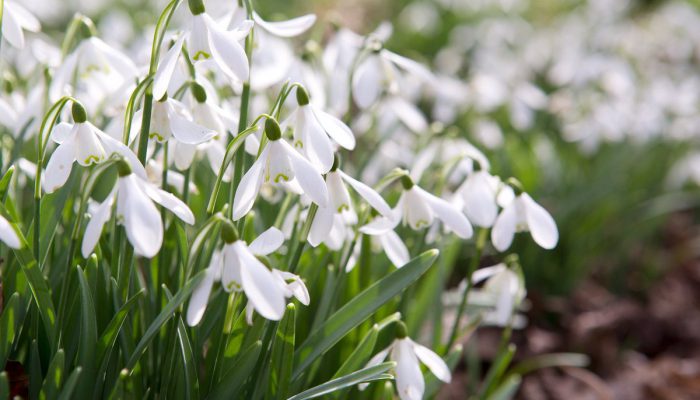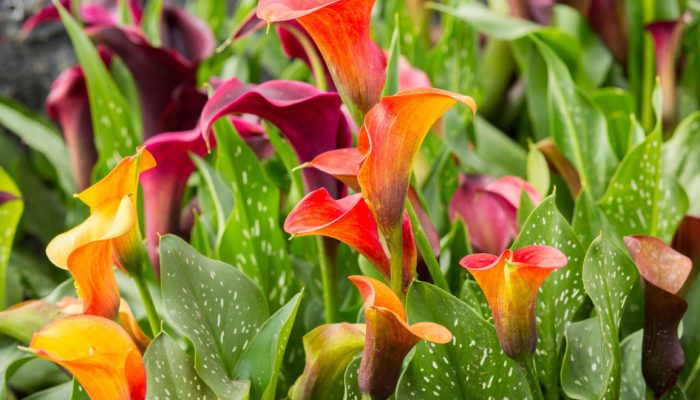Gardening Top Tips
Seasonal Tips for February
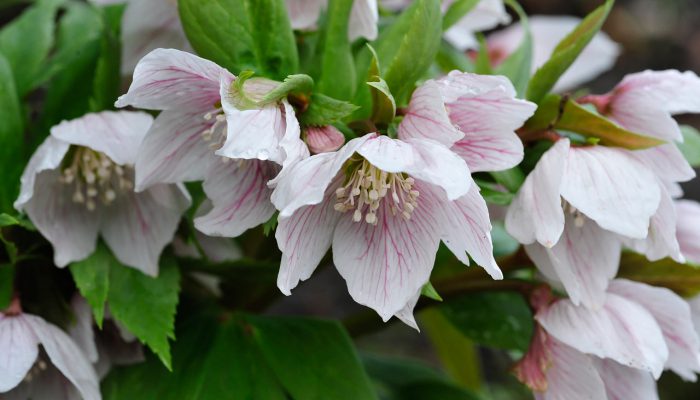
[checklist style=”square”]
- Prepare vegetable seed beds and start to sow early vegetables under cover.
- Prepare vegetable seed beds and start to sow early vegetables under cover.
- Start dahlia tubers into growth in pots under protection. Now is the best time to buy new varieties.Protect blossom on apricots, nectarines and peaches.
- Chit potato tubers and purchase onion sets and garlic now, ready for the new season.
- If you purchased one of our Amaryllis (Hippeastrum) bulbs this Christmas, deadhead leaving the flower stalk to die naturally. Keep feeding and watering
- Prune winter flowering shrubs that have finished flowering. Also Wisteria and evergreen hedges.
- Sow sweet peas under cover. We have many spectacular new varieties to choose from.
- Divide and replant snowdrops now while ‘in the green’.
- Plug plants are now ready at our centres – a fun and effortless way to grow bedding and vegetable plants.
- Cut back deciduous grasses left uncut over the winter.
[/checklist]
Seasonal Tips for April

[checklist style=”square”]
- Control perennial weeds with Roundup or Neudorff glyphosate free weedkiller this month.
- Mulch borders with 50mm (2 inches) of bark will suppress weeds.
- Top dress shrubs with fish, blood and bone and roses with Vitax rose food.
- Sow new lawns and repair bare patches.
- Apply Evergreen Complete or Neudorff Organic Cleanlawn Natural Treatment to the lawn to fertilise and control moss and weeds. Alternatively, April is the best month to apply Weedol lawn weedkiller.
- Plant summer-flowering bulbs, shallots, onions, asparagus and garlic if not done already. Chit and plant out second early potatoes in the first half of the month, maincrop potatoes in the second half.
- Put supports in place for perennials before they get too large.
- Lightly cut back lavenders to prevent them getting too leggy and woody.
- Ideal time to plant pot-grown fruit trees and bushes.
- Sow Outdoors Sweet peas, beetroot, carrots, Swiss chard, summer cauliflower, kohl rabi, lettuce, leeks, radish, turnip, spring and pickling onions, sweet peppers, tomatoes, marrow, cucumbers, courgettes, celery, squash, pumpkins, celeriac, peas, perpetual spinach and globe artichokes in well-prepared soil. Protect early outdoor sowings with fleece and polythene.
- Sow Indoors Marrows, courgettes, pumpkins and squash. Also sweet peppers, tomatoes, cucumbers, aubergines, celery, celeriac, salads and globe artichokes. Alternatively choose from a range of vegetable plants from our nursery for growing on.
[/checklist]
Seasonal Tips for May
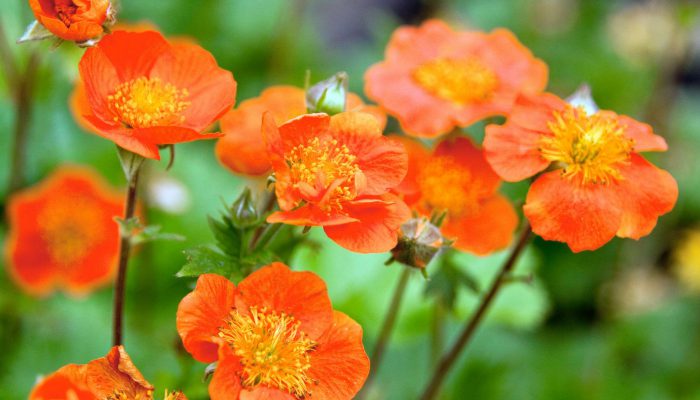
[checklist style=”square”]
- Earth up potatoes.
- Sow wallflowers, pansies, and Bellis perennis from now onwards for spring bedding next year.
- Deadhead tulips and daffodils & apply Vitax Organic Liquid Seaweed. Allow foliage to die down naturally.
- Put supports in place for herbaceous plants before they are too tall.
- Liquid feed plants in containers with Tub and Hanging Basket feed every two to four weeks. Pot on plants showing signs of being root bound. Check for vine weevil in the rootball (creamy, orange-headed maggots).
- Inspect lilies for the scarlet lily beetle and gooseberries for sawfly. Both can strip a plant in days. Spray with Provado.
- Protect new growth from slugs and snails.
- Apply Evergreen Complete to fertilise lawns and control moss and weeds. Neudorff Cleanlawn is a good organic alternative lawn fertiliser and mosskiller. Lawn seed can still be sown with good results.
- Protect carrots with enviromesh to prevent carrot root fly.
- Put up codling moth traps in apple trees.
[/checklist]
Seasonal Tips for June
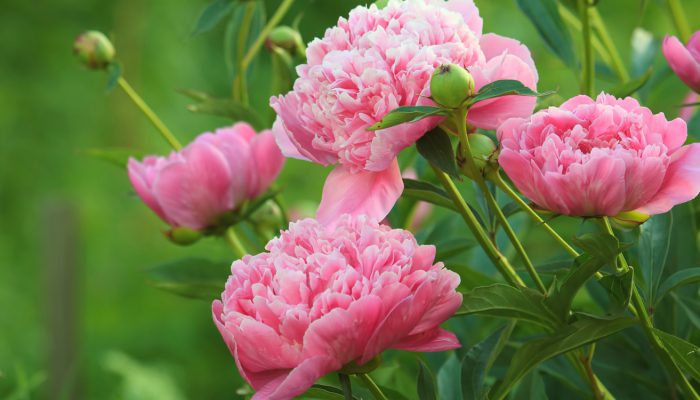
[checklist style=”square”]
- Support taller herbaceous plants with plant rings and supports.
- It is not too late to direct sow a few fast growing, hardy annuals such as Calendula, Godetia and Clarkia.
- Direct sow runner beans, French beans and sweet corn for a bumper crop.
- Trim box hedging. Avoid wet days and remove clippings to minimise the risk of box blight.
- Sow winter flowering pansies and ornamental cabbage for late colour, along with wallflowers for spring flowering
- Hang yellow sticky traps to control insect pests in the greenhouse.
- Start watering fruiting plants with Tomorite for a bumper crop.
- Hoe borders regularly to keep down weeds.
- Fit shading in your greenhouse or spray with Greenhouse Shading.
- Check roses early on for blackspot, aphids and leaf-rolling sawfly. Apply RoseClear. Red lily beetle and sawfly are now active and can be controlled with BugClear for flowers, fruit and veg. Vine weevil is a serious pest in containers and will also start to become active this month.
[/checklist]
Seasonal Tips for July
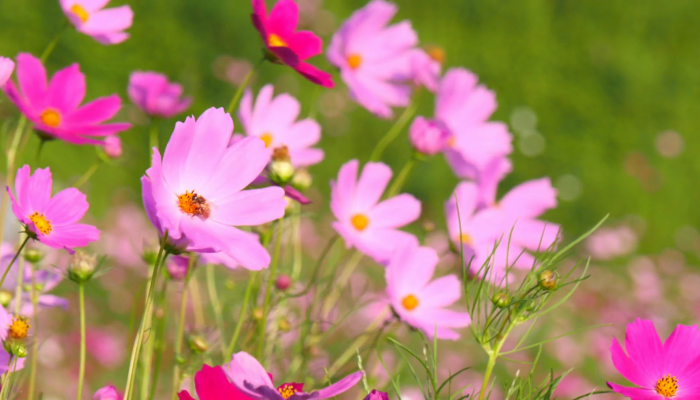
[checklist style=”square”]
- Cut back delphiniums and geraniums after the first flush of flowers to encourage a second flowering period.
- These and late flowering border perennials will benefit from a top dressing of quick acting organic feed such as Sulphate of Potash.
- Liquid feed containerised plants with Tomorite to keep flowering throughout summer.
- Mulch borders to retain moisture and prevent weeds. 2-3 inches depth works best.
- Roundup weedkiller is most effective when the weeds are in active growth. A good glyphosate free alternative is Neudorff Longlasting Weedkiller
- Prune June-flowering shrubs now. Look out for:
- Scale insect on bay trees. Small oval bumps under the leaves. Organic sprays such as SB Plant Invigorator give some control if applied weekly. For more persistent infestations use Provanto ultimate bug killer.
- Asparagus beetle is also active stripping the bark – use an organic spray such as Bug Clear for Fruit and Veg.
- Greenfly and blackfly on young shoots. A regular spray of SB Plant invigorator will provide non-toxic control.
- Aphids and black spot control with Rose Clear.
- Powdery mildew can occur in dry weather. Mulch plants to keep moist. Spray with Fungus Clear.
- Inspect lilies for the scarlet lily beetle and spray with an organic spray such as Vitax Plant Guard or SB Plant Invigorator.
- Sow spring cabbage, chard and winter spinach.
- Plant winter cabbage plants.
- Give the lawn a quick-acting summer feed.
- Give woodwork a coat of preserver while the weather is dry.
[/checklist]
Seasonal Tips for August
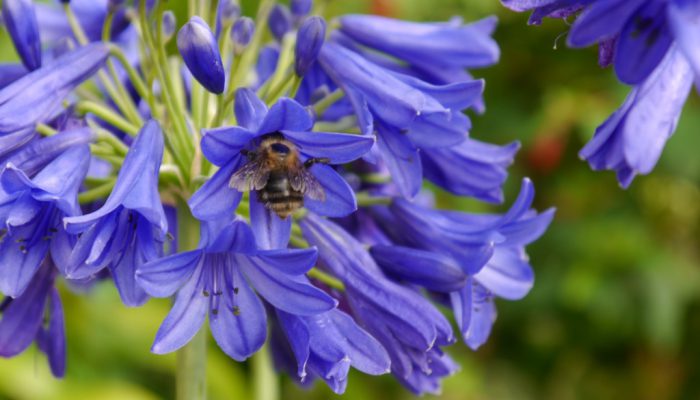
[checklist style=”square”]
- You can still sow quick maturing salad crops, spring cabbage, turnips, oriental vegetables and overwintering onions.
- Complete summer pruning of fruiting fans and cordons.
- Deadhead flowering plants to maintain flowering.
- Watering!
- Cut out the old fruited canes of raspberries.
- Sow green manures now as a soil improver.
- Cut back flowered herbaceous plants to create a late season flush.
- Prune rambling roses after flowering. Thin and shorten excessive growth and reduce side shoots by two thirds.
- Protect dahlia flowers with earwig traps – upturned pots on canes filled with hay or straw. Shake out the pots every morning.
- Give hedges a final trim.
- Prune Wisteria. Cut back new season growth to 5 leaves.
[/checklist]
Seasonal Tips for September
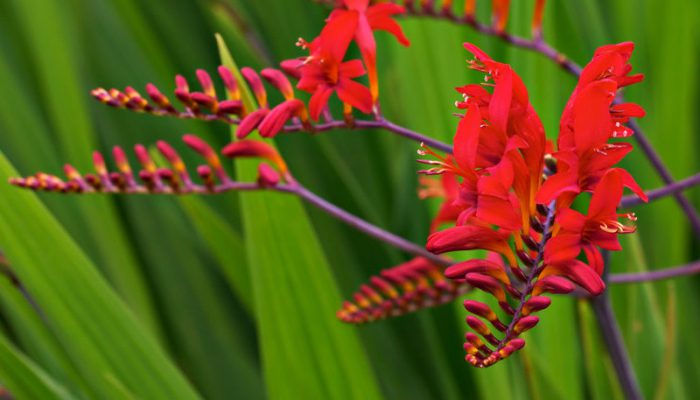
[checklist style=”square”]
- Plant spring flowering bulbs.
- Sow Sweet Peas under protection. Hardy annuals can be direct sown in the garden or sown in pots in the greenhouse for planting out in spring. Cornflower, Poppy, Love-in-a-Mist, Honesty and Calendula are all great for Autumn sowing.
- Now is a good time to plant new plants and divide existing perennials, while the soil is warm and moisture levels are rising.
- Prune climbing roses after flowering. Cut back side shoots from the main branches to two or three buds and remove old, unproductive stems completely.
- Apply Evergreen Autumn to your lawn to strengthen roots and control moss. Ask for details of our FREE SPREADER HIRE.
- This is an ideal time to sow new lawns or lay turf.
- Pot prepared Hyacinths now for a Christmas display.
- Cut back old fruited canes of blackberries and cane fruits. Pick autumn raspberries.
- Prune blackcurrants. Fruit forms on young wood, so aim to remove older wood, leaving the young shoots.
- Plant overwintering onion sets. Cover leafy vegetables with bird netting.
[/checklist]
Seasonal Tips for October
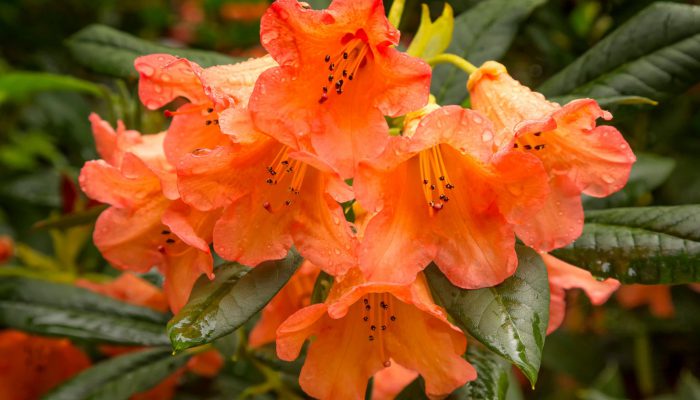
[checklist style=”square”]
- Divide overcrowded and poor flowering herbaceous plants.
- Plant out onion and garlic sets, now available from the garden centre.
- It’s turf laying time! To guarantee quality, deliveries arrive every Friday on a first come, first served basis. For existing lawns, rake in Tunstall lawn top dressing to thicken grass and improve rooting.
- Plant wallflowers, winter pansies and spring-flowering bulbs for spring colour.
- Now is a good time to plant new shrubs, trees and perennials.
- Lift dahlias after the first frost. Cut back foliage, dry off and lay in boxes. Cover in compost with crowns exposed. Store in a dry, frost free shed or garage. (They may overwinter in the ground, protected by 150mm of chipped bark).
- Replant hanging baskets with spring-flowering bulbs, winter heathers, trailing ivies and spring bedding plants.
- Sweet peas can be sown in the greenhouse now. We have over 42 varieties to choose from!
- Insulate your greenhouse with bubble wrap.
- Turn the compost heap and add compost maker to aid decomposition.
[/checklist]
Seasonal Tips for November
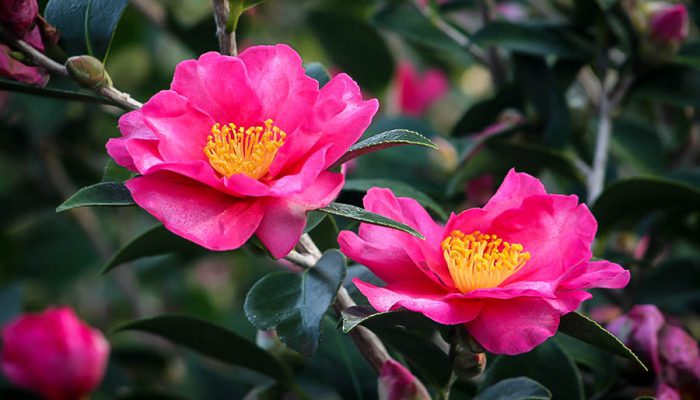
[checklist style=”square”]
- Plant tulip bulbs in November for spring colour.
- Sow broad beans to plant out in spring.
- Lay new turf when the ground is not saturated with rain or frozen.
- Plant trees and fruit plants now.
- Wrap outdoor containers with bubble wrap to prevent frost damage to pots and roots. Raise containers onto pot feet to prevent waterlogging.
- Apply grease bands as soon as possible to stop winter moth damage to fruit trees.
- Cover Kale, sprouts and winter brassicas with netting to prevent the pigeons eating them.
- Put out bird food now for winter feeding.
- Plant shrubs with berries such as Pyracantha and Viburnum to provide winter sustenance for birds.
- Now is the last chance to plant out winter bedding such as wallflowers and winter pansies.
- Cut down faded herbaceous perennials for the compost heap (Leave Penstemons until spring to aid over-wintering). Divide overgrown clumps of herbaceous perennials.
- Apply an autumn mulch to protect less hardy perennials such as Agapanthus, Kniphofia and Phygelius. (Kniphofia leaves can be tied up to protect the crowns).
- Weed killers are still effective if mild, so you can still spray to clear fresh weeds ready for winter.
- Pot up Amaryllis bulbs in time to produce festive colour – we have a wide range now available.
- Fit greenhouse insulation to reduce the risk of frost in the greenhouse.
[/checklist]
Seasonal Tips for December
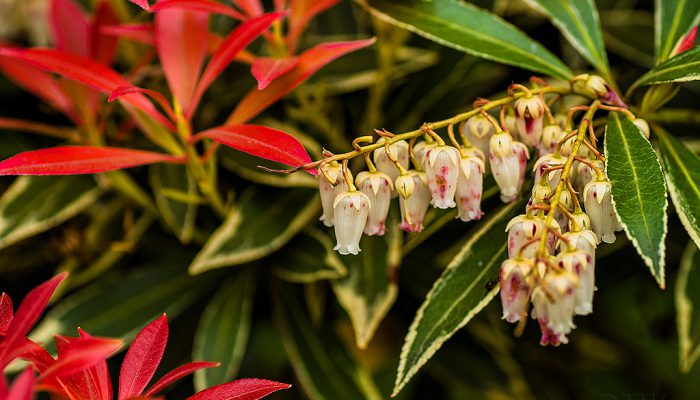
[checklist style=”square”]
- Feeding birds is a great natural pest control. Dig over bare soil to expose soil pests. Use high energy bird feeds and fat products to keep birds active during the winter cold.
- Plant fragrant winter shrubs such as Christmas Box, Daphne, Viburnum farreri and Cornus. Deciduous trees and shrubs can still be planted and transplanted when ground is not frozen.
- Clean lichen and moss from paths with Vitax patio cleaner.
- Spray roses and fruit trees with Vitax winter tree wash. Apply grease bands or fruit tree grease to prevent winter moth damage next year.
- Use glasshouse fumigator to control red spider mite and other overwintering insects.
- Remove any silt and leaves from your pond. Using a simple ice prevention pond heater will protect fish and allow essential oxygen exchange to take place.
Begin pruning soft and tree fruits. Prune open-grown apples and pears (but not those trained against walls). - Prune Acers, birches and vines before Christmas to avoid bleeding.
[/checklist]





